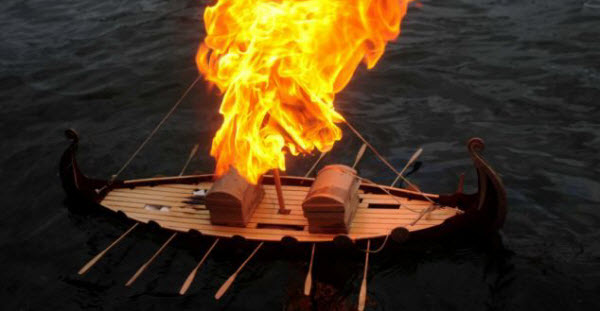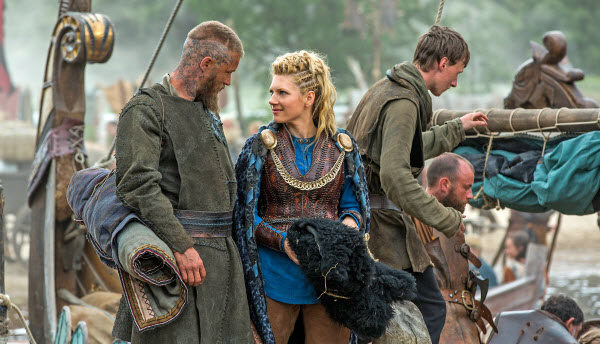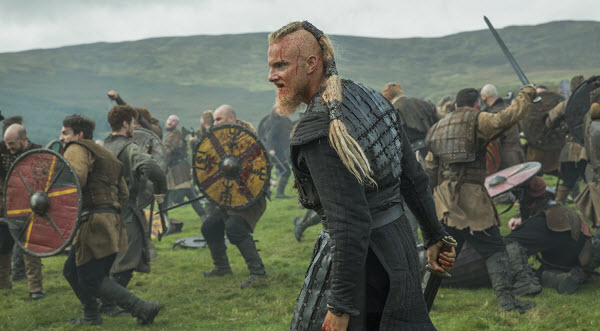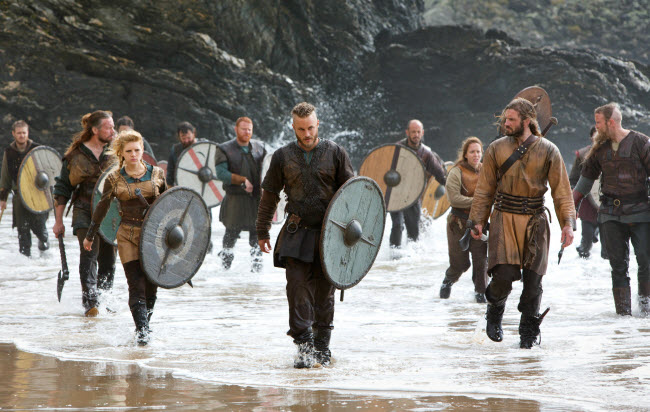Between the 8th century and the 11th century, many Scandinavian citizens left their homes in search of wealth. Over these three centuries, they proved their immense combat skills as warriors, raiders, and traders through their expeditions to Britain, Russia, Iceland, Greenland, and Newfoundland. These fighters were known as “Vikings,” meaning “Norse pirates” or raiders. Despite the historical fame of the Vikings, many misconceptions about their customs and characteristics exist, often exaggerated or misunderstood. This article explores some intriguing facts about the Vikings that you might not know and corrects several of these misconceptions about their lives.
Vikings Did Not Wear Horned Helmets
You may have seen in various artworks that Vikings wore helmets with horns, but this is not accurate. Although Vikings did wear helmets during battles, these helmets were never adorned with horns. Evidence from the Viking Age and historical images do not support this notion. The only original Viking helmet discovered was hornless. This horned helmet image likely emerged from 19th-century artistic interpretations, possibly influenced by ancient Greek and Roman descriptions of Scandinavian priests who wore horned helmets only for ceremonial purposes.
They Paid Great Attention to Personal Hygiene
A common misconception is that Vikings, due to their frequent raids and travels, were unkempt and dirty, sporting unshaved beards. However, archaeological findings from Viking sites reveal grooming tools like tweezers, razors, combs, and ear cleaners made from animal bones. They regularly changed their clothes and bathed at least once a week, which was far more frequent than other Europeans of the time. They also enjoyed frequent baths in natural hot springs, and their emphasis on cleanliness led to them being accused of vanity by other cultures.
They Used a Unique Substance for Starting Fires
Despite their primitive and pagan lifestyle, Vikings developed unique methods to aid their harsh living conditions. They collected a fungus called “tinder fungus” from tree bark and boiled it in urine for several days. The sodium nitrate in the urine allowed the fungus to catch fire more easily. This allowed Vikings to carry fire with them on their travels without difficulty.
Vikings Buried Their Dead in Boats
Vikings had a deep affection for their ships, and being buried in one was considered a great honor. According to Norse beliefs, brave warriors entered a glorious afterlife called “Valhalla.” They believed that ships that served them well in life would assist them in their final journey. Therefore, prominent Viking warriors and women were buried in ships surrounded by weapons, valuable goods, and sometimes sacrificed slaves.

They Were Active in the Slave Trade
Many Vikings became wealthy through the slave trade. During their raids, they captured and enslaved women and young people from Anglo-Saxon, Celtic, and Slavic settlements. These slaves were then sold in large markets across Europe and the Middle East for significant amounts, enriching many Vikings through this trade.
Viking Women Had Some Basic Rights
Viking women, who often married at a young age, typically around 12 years old, were primarily responsible for managing the household while their husbands were away on raids. Despite these responsibilities, Viking women enjoyed more freedoms compared to their counterparts in other societies. They could inherit property, request divorces, and retain their dowries if their marriages ended.

Viking Men Spent Most of Their Time Farming
Contrary to popular belief, most Viking men spent more time farming than fighting. While some were fierce pirates raiding and burning villages, the majority of Vikings grew barley, rye, and oats for at least part of the year. They also raised cattle, goats, pigs, and sheep on their small farms, producing enough food to sustain their families.
They Enjoyed Skiing as a Hobby
Scandinavians developed primitive skis at least 6,000 years ago. While ancient Russians might have been the first to invent them, by the Viking Age, Northern Europeans considered skiing an effective means of travel and a delightful recreational activity. They even worshipped a skiing deity named “Oler,” believed to be a skilled hunter who used skis.
They Preferred Blonde Hair
Blonde hair was highly prized among Vikings as part of their beauty ideals. Men often used strong soaps with high lye content to lighten their hair, and in some areas, they also lightened their beards.
They Did Not Live in Unified Groups
Vikings did not recognize fellow Vikings in the way often portrayed in modern media. The term “Viking” simply referred to Scandinavians who participated in external explorations. During this era, the lands now known as Denmark, Norway, and Sweden were divided into various tribes led by chieftains who frequently fought each other when not engaged in raiding foreign shores.

They Were Fond of Cats
Cats were highly valued in Viking communities. They were domesticated to live on farms and kept to ward off pests. Cats were considered affectionate household pets and were taken on long journeys to neighboring lands. Their fondness for cats is attributed to the goddess of love, “Freyja,” who was said to ride a chariot drawn by a team of cats. Cats were also a common wedding gift, helping the bride establish her new home.
They Named the Days of the Week After Their Gods
The Vikings named each day of the week after their Norse gods, except for Saturday, which was named after the Roman god Saturn. Sunday was named after “Sól,” the sun goddess; Monday was named after “Máni,” the moon god; Tuesday was named after “Týr,” the god of war; Wednesday was named after “Odin”; Thursday after “Thor,” the god of strength and storms; and Friday after “Frigg,” the goddess of marriage.
They Considered Alcohol Sacred
Historians and archaeologists agree that Vikings had a strong drinking culture. Beer was an essential part of their mythology, with “Valkyries” bringing refreshments to fallen warriors in Valhalla. Drinking was a central part of every celebration and gathering. During major events, the lady of the house served the warriors and then honored the gods and ancestors. Swearing sacred oaths while drinking was believed to help men shape their destinies and communicate with their gods.
